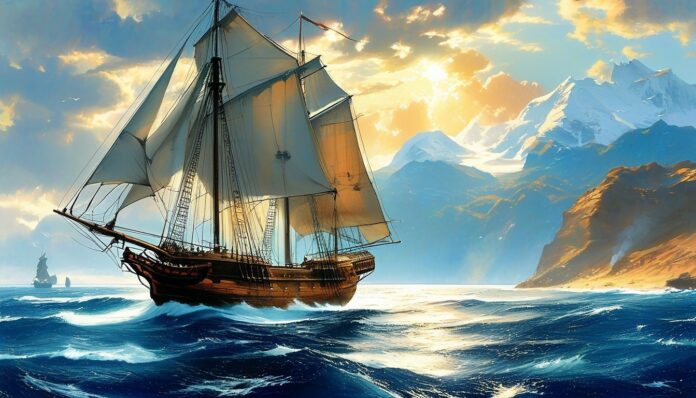During the Age of Discovery and the exploration of the New World in the 15th-17th centuries, European sailors often faced severe food shortages while at sea. Without the ability to resupply on land, many succumbed to starvation and disease.
But why didn’t sailors fish in the ocean?
The reason lies in the fact that in the remote parts of the ocean, located between 30° and 35° north and south latitude, there are no fish. These zones are known as oceanic deserts or “horse latitudes.”
These regions are characterized by oceanic anticyclones—areas of high pressure with descending air currents. These latitudes experience clear, calm, and cloudless weather year-round.
During the era of sailing, sailors who ventured into these areas were often left adrift due to lack of wind. With dwindling supplies of food and water, they were forced to throw animals overboard, including horses, which were their primary land transportation. This is how the region got its name.
The lack of fish is due to both the calm conditions and the immense depth. It just so happens that under the “horse latitudes” lie extensive deep-sea plains: the North American, Brazilian, and other basins.
Why Didn’t Sailors Fish on Long Voyages?
Horse Latitudes
In coastal regions, nutrients enter the ocean either from the depths due to water mixing during storms or are carried from land by winds. These conditions allow plankton—small, diverse organisms—to thrive, which in turn supports various fish species.
In oceanic deserts, nutrients from the deep layers do not reach the surface, and winds do not bring them from the land. Thus, plankton is absent, and consequently, so are fish.
If you look at the maps of voyages by Magellan, Cook, and other great explorers, you’ll notice that a significant portion of their routes passed through these “dead zones.”
Unfortunately for sailors, fishing was dangerous even near the coast. Their lives were troubled by dinoflagellates—single-celled organisms living near corals, algae, and marine plants.
The main concern was their production of the biological toxin ciguatoxin. Small fish that fed on dinoflagellates accumulated the toxin in their bodies. Predatory fish like groupers, moray eels, and tuna would then eat these smaller fish and accumulate the toxin as well.
For marine animals, this substance is harmless, but for humans, it causes acute gastrointestinal poisoning. After several such poisonings, officers began to prohibit sailors from fishing. All unknown species of coral reef fish were deemed dangerous by default.
Sailors on long voyages had to rely solely on their own food supplies, hoping they would last until the next stop. The situation began to improve only in the 19th century: steamships could quickly cross the dead zones, and travelers learned to distinguish between edible and poisonous fish and how to prepare them.
